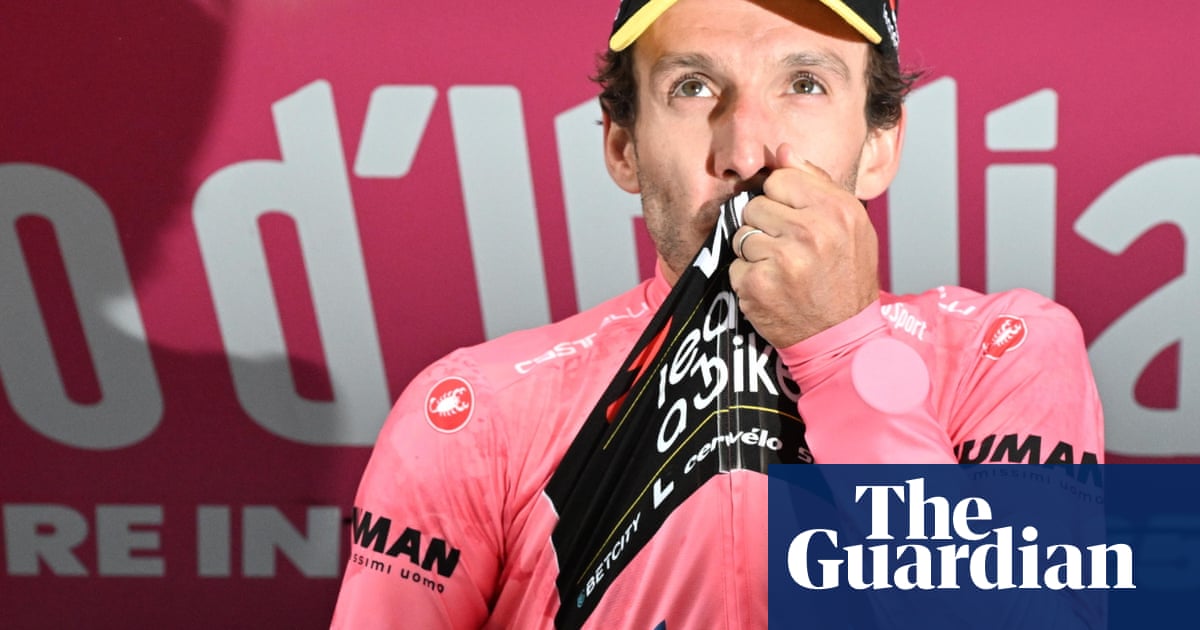The Colle delle Finestre is a sporting theatre in the north of Italy and just a short ski run from the border of France but it has become the site of two of Britain’s most incredible moments in this race. In 2018 Simon Yates was leading the Giro d’Italia by 3min 22sec but became the victim ofChris Froome’s imperious rideon the same slopes. That day, Yates collapsed and ultimately finished 38 minutes behind Froome but on Saturday, seven years later, the rider from Bury would have his redemption by pulling the same trick on Isaac del Toro and Yates will now – barring accidents – win his second Grand Tour on Sunday.
This was billed as Del Toro v Richard Carapaz and even pre-stage Yates was playing down his chances, he said those two riders were a “step above”. This was clearly a bluff. Over the last 38.5km of almost entirely uphill racing, Yates overturned his 1min 21sec pre-stage deficit and created an insurmountable time gap of 3mins 56sec to Del Toro.
What happened in 2018 has clearly stayed with Yates ever since and from the moment the Giro released its route for this year he has been targeting some kind of redemption.
“Once the parcours was released I always had it in the back of my mind that maybe I could come here and close the chapter. Maybe not to take the pink jersey and the race but at least win the stage win or something,” the 32-year-old told TNT Sports after the stage, almost through tears. “To try and show myself, the way I know I can do and to pull it off – I really didn’t believe it. I have to thank the guys, the team. They believed in me and even during the stage they were saying ‘just give it a try’ and I did it in the end.
“I’m not really an emotional person really but even coming over the finish line I couldn’t hold back the tears. It’s something I’ve worked towards throughout my career, year after year and I’ve had a lot of setbacks. I’ve finally managed to pull it off.”
The stage itself was won by Chris Harper of Team Jayco–AlUla, who pulled clear on the Finestre and let all the drama unfold behind him. And it was some drama.
What should not be overlooked in this whole piece is the role of Wout van Aert, Yates’s Visma–Lease a Bike teammate, who snuck into a huge breakaway by the virtue of being part of the final 19-man group that chased down the first 12 riders who sped off from Verrès. Yates had a GC lead of 1min 40secs on the road when he found Van Aert on the descent down the Finestre and by the time the Belgian turned off the gas the gap back to Del Toro was almost four minutes.
Visma–Lease a Bike have followed a similar tactic of sending a man up the road on almost every stage, but few are as good at this job as Van Aert, who Yates described as crucial in the victory.
However, the Briton had done a lot of the hard work himself. Yates was not even part of the original attack on Del Toro at the bottom of the category one climb up the Finestre. EF Education-EasyPost had set up the slingshot for Carapaz to fire off from a crumbling peloton as the gradient reached 14%. Yates responded to successfully bridge the 20-second gap to Carapaz and Del Toro, who looked comfortable on the back of the Ecuadorian’s wheel, to form the group of protagonists who would decide the GC battle.
Yates and Carapaz took it in turns to attack Del Toro, but the Mexican seemed less bothered when the Briton would get out of the saddle. Even when Yates made a move that stuck Del Toro seemed more interested in Carapaz than chasing down the man who would go on to steal away the Giro.
As Yates increased the time gap on the gravel track up the mountain, Del Toro just followed Carapaz and by the time the man riding in pink realised he might have a problem it was far too late.
Questions will have to be answered by UAE Team Emirates XRG as to how they let their rider, who always looked as if he had more in the tank, simply watch Yates ride off with the pink jersey. Apparently Yates was the only man who did not think he could pull of the remarkable turnaround, even as the UAE riders on the road fumed into their radios when it became clear the race was over on the final climb up to Sestriere.
“200m to go [was when I believed I could win the Giro],” said Yates. “I was on the radio blabbing asking for the time gap because I never truly believed until the very last moment.”
This is a redemption story for the ages and sees Yates earn a second Grand Tour win(after his Vuelta a España triumph in 2018)that must elevate him into the upper echelons of British cycling greats. After the processional stage into Rome he will officially become the third Briton to win the Giro in the last decade. Few have claimed one of cycling’s big three races in such a remarkable manner and having been the victim of one of those dramas, it is fitting that Yates can now move on from 2018 so definitively.
